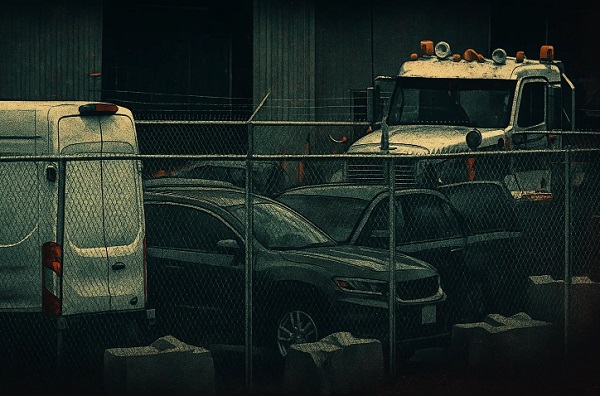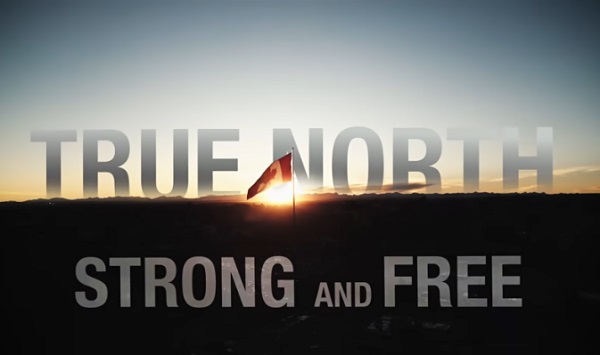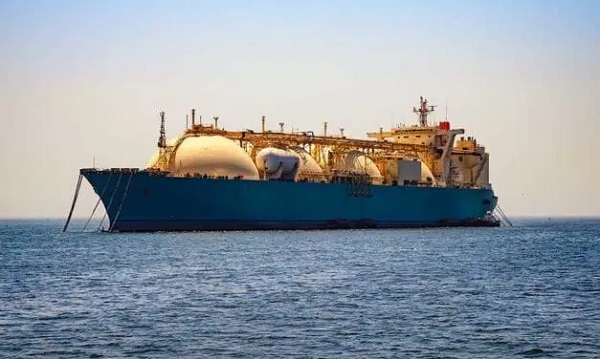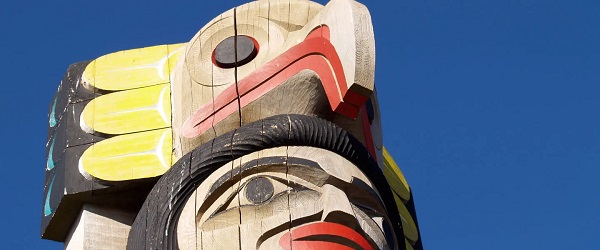Crime
Mexican Cartels Expanding Operations in Canada, Using Indigenous Reserves as Factory Hubs

With Factories on Six Nations Land, Mexican Cartels Are Using Canada to Smuggle Counterfeit Goods Into the U.S. and Mexico
“Project Panda,” a major Ontario gang taskforce takedown in May targeting a counterfeit tobacco factory on the Six Nations Reserve near Hamilton and Buffalo, exposes a long-ignored reality: Mexican cartel networks have deeply embedded themselves in Canadian territory near the U.S. border—and are expanding in tandem with Chinese state-linked crime partners, using Indigenous land for counterfeit production and cross-border smuggling.
This is no longer just a policing matter. It is a national security crisis—one that exploits Indigenous communities, land, and jurisdictional protections that have inadvertently shielded criminal networks now designated as terrorist threats. Worse still, the threat has long been known to Canadian, American, and Mexican authorities. Yet Ottawa has failed to act.
Stunningly, an explosive intelligence report released last year labeled Canada a “safe zone” for Chinese and Mexican cartel networks to traffic weapons, drugs, and counterfeit tobacco through Six Nations land. “Mexican authorities have also stated that Canada is responsible for 12% of all the lost tax revenue for the Mexican Government from illicit cigarettes,” the report says, and alleges that “companies established in Six Nations have introduced up to 500 million cigarettes a year illegally into Mexico.”
That same report says more than 73 illicit factories have operated over the past 20 years, linked to 173 organized crime groups, including Mexican and Chinese networks.
Heavily armed Ontario Provincial Police units, supported by multiple agencies, raided the factory and associated sites on May 1 and 7. The targets spanned Six Nations, Brantford, and Ancaster—territories sitting between Hamilton, Niagara Falls, and Buffalo. What they found was staggering: 1,360 pounds of illegal cannabis, 3.16 kilograms of psilocybin, 15 firearms, and large skids of counterfeit tobacco packaging, valued at over $3 million. The factory is surrounded by barbed fences and trailer trucks. One of the raids intercepted two vehicles leaving the site with 11.1 million contraband cigarettes worth another $2.8 million.
While Project Panda hasn’t, at least yet, addressed fentanyl on Six Nations land, a related investigation—Project Roll the Dice—carried out by Six Nations Police on May 2, 2025, did target fentanyl trafficking. Search warrants were executed at a Mississauga Road residence and vehicle on the Mississaugas of the Credit First Nation. Police seized 58 grams of fentanyl, 17 grams of cocaine, Canadian currency, drug packaging materials, digital scales, and multiple cellphones.
Project Panda drew scant attention from Canadian media, with coverage limited to local outlets. But The Bureau’s document analysis and interviews with law enforcement sources reveal a deeper crisis: Canada’s national security vulnerability runs through southern Ontario and Quebec—stretching from the Six Nations of the Grand River, into Brantford, along the St. Lawrence, and directly to the U.S. border. This corridor has become a protected staging ground for Chinese organized crime, long embedded with the Hells Angels, now operating in concert with Mexican cartels.
Though the factories operate on Indigenous land, Ontario police have made clear they are controlled by non-Indigenous organized crime syndicates.
“This investigation involved a tobacco manufacturing facility operated by members of a non-Indigenous criminal network who do not reside on the territory,” Project Panda investigators stated, adding that tobacco sales directly fund organized crime networks. The profits do not benefit local communities.
Confidential sources told The Bureau that Mexican cartel operatives are behind the factories and reserve-based casinos. Their presence is enabled by jurisdictional grey zones, preferential tobacco tax exemptions, and a persistent political unwillingness in Ottawa to confront the threat.
Behind the Mexican cartels, as in Canada’s fentanyl superlab economy, loom Chinese Triads. Canadian intelligence has long warned of this dual-threat structure. Sources close to Project Panda confirm the violence is intensifying, with shootings and firebombings linked to cartel enforcement groups. Seizure evidence shows high-powered firearms and growing operational sophistication.
This isn’t a new threat. As early as 1997, the suppressed Sidewinder intelligence report—later believed by its authors to have been buried by political actors in Ottawa—warned that Triads linked to the People’s Republic of China were trafficking weapons through reserves such as Six Nations. The report cited connections to Chinese military-run companies and descendants of top Communist Party leaders. “Several large quantities of arms manufactured by Norinco have been confiscated on Indian reserves, especially those of the Mohawks,” it stated.
In 2008, Parliamentary testimony from Imperial Tobacco Canada echoed similar concerns. MPs heard that approximately 150 criminal groups were exploiting Six Nations people and land. At the time, illegal cigarettes made up 22% of Canada’s tobacco market—over 30% in Ontario and Quebec. Of those, 93% were traced to First Nations reserves.
Conservative MP Dave MacKenzie noted: “I do not see the aboriginal community as being the big villains in this whole picture. What we’re hearing now is that they’ve been used by organized crime. The Americans are saying terrorist organizations are using it to fund terrorist activity; I don’t think we have that evidence, but the Americans are saying that.”
A legitimate Six Nations tobacco plant owner—whose Grand River factory is located just hundreds of meters from the cartel-linked plant raided in 2025—described the surrounding area as infiltrated. “If you come to some reserves—for example, Six Nations—it looks like a war zone right now,” the man testified in 2008. “It truly does not look like the Canada that we all want our First Nations kids growing up in.”
“It’s not a normal environment for a young person to grow up in, and if they have to work in a tobacco factory that’s unregulated, how does anybody know whether there are firearms and other things and activities in there? Nobody will be able to answer that.”
These warnings ignored for decades are now being validated by probes like Project Panda and new intelligence. In a recent interview, a senior U.S. government source said concerns over Mexican cartel expansion into Canada intensified after Prime Minister Justin Trudeau lifted visa requirements for Mexican nationals in 2016. The source said U.S. officials repeatedly raised cartel threats in high-level bilateral meetings, but Canadian officials downplayed the risks, frustrating joint law enforcement efforts and compounding intelligence blind spots.
This assessment aligns with a 2023 report from former U.S. State Department official David Luna which described Canada as a “safe zone” for Chinese Triads and Mexican cartels.
According to the Criminal Intelligence Service of Canada, illegal tobacco costs governments over $12 billion in lost revenue. More than 83 contraband brands are distributed worldwide from Canada, with 73 illicit factories documented in the past two decades. Some estimates suggest illicit product accounts for 24% of Canada’s tobacco market. The agency confirms that cartel actors are smuggling drugs and weapons into Canada in exchange for cigarettes.
“Chinese criminals are involved in producing cigarettes on Indigenous reserves, saving money and benefiting from tax exemptions,” Luna’s report states.
Research from the Mackinac Center shows that in New York—a high-tax state—53% of cigarettes are illicit. Many are sourced from Canada. U.S. DEA and ICE officials have traced duty-free cigarette flows to reserves in Ontario and Quebec, through smuggling chains that extend to Panama, Korea, and free trade zones in China.
Chinese Triads are also implicated in counterfeit production, exploiting Section 87 of the Indian Act, which exempts on-reserve goods from taxation. These groups arbitrage that legal gap, distributing low-cost cigarettes across Canada and into foreign markets.
This cross-border trade, concealed behind legal protections and legitimate Indigenous businesses, has become a central artery for cartel financing, narcotics, and arms.
There is no longer any plausible denial: the use of Canadian Indigenous lands by Mexican cartels and Chinese Triads is directly connected to North America’s fentanyl and trafficking crisis. Ottawa’s continued refusal to acknowledge and confront this system is indefensible.
Canada’s security and sovereignty depend on it—now more than ever.
The Bureau is a reader-supported publication.
To receive new posts and support my work, consider becoming a free or paid subscriber.
Invite your friends and earn rewards
Crime
Down the Charlie Kirk Murder Rabbit Hole

- Tyler Robinson’s dad is not a cop but in construction.
- The idea of a wider conspiracy is more credible today.
- Discord is the platform that Robinson used. Twitch is also a gaming platform and one that hosts a great deal of inflammatory speech against MAGA and conservatives more generally.
- The trans story connection from Thursday is taking off with yet another odd festishistic twist. Wait for it.
My credentials do come into play somewhat here and you deserve to know them. I worked at the highest levels of true crime investigation and reporting for many years. In cases like this, experience matters. A number of grifters have emerged to monetize this story. Including the bizarre contention that the rise of Charlie Kirk haters posting on social media is a “psy-op” which is easily debunked. They are real accounts with actual bios attached and the posters whose names are on them are being fired and punished. Demonstrably provable.
On background — our team overturned the conviction of a Nova Scotia man wrongfully convicted of murdering his wife. We uncovered evidence that Karla Homolka was more likely than Paul Bernardo to have murdered their victims. It was the highest rated crime reporting in the history of the CBC. Later, I investigated and further exposed a spate of wrongful convictions on Chicago’s South Side that send many young black men to prison for murders they didn’t commit. There are more but let’s leave it at that.
Are we being lied to? No doubt. My advice: stay away from the influencers and rage farmers. They will not make us smarter.
So what do we have? We have a narrative around Tyler Robinson which gets weirder by the minute. And we have an emerging idea around Israel that I rejected in the podcast but am curious about after reading a piece by Max Blumenthal. Kirk was turning away from the Zionist billionaires who’d helped fund TPUSA and they had started threatening him for questioning the America/Israel collaboration. Kirk was also questioning Israel/Gaza and America’s blind attachment. I apologize to Chris Bray our brilliant guest for not giving him a chance to comment on this as I am sure he has something to say. I found the Grayzone piece after we recorded.
Stick with me. I am posting here the entire Grayzone article. Please read it and comment but keep it cool. At this point — can we take anything off the table?
A Trump insider and longtime friend of Charlie Kirk tells The Grayzone how the assassinated conservative leader’s turning point on Israeli influence provoked a private backlash from Netanyahu’s allies that left him angry and afraid.
The source said anxiety spread within the Trump administration after an apparent Israeli spying operation was uncovered.
Charlie Kirk rejected an offer earlier this year from Israeli Prime Minister Benjamin Netanyahu to arrange a massive new infusion of Zionist money into his Turning Point USA (TPUSA) organization, America’s largest conservative youth association, according to a longtime friend of the slain commentator speaking on the condition of anonymity. The source told The Grayzone that the late pro-Trump influencer believed Netanyahu was trying to cow him into silence as he began to publicly question Israel’s overwhelming influence in Washington and demanded more space to criticize it.
In the weeks leading up to his September 10 assassination, Kirk had come to loathe the Israeli leader, regarding him as a “bully,” the source said. Kirk was disgusted by what he witnessed inside the Trump administration, where Netanyahu sought to personally dictate the president’s personnel decisions, and weaponized Israeli assets like billionaire donor Miriam Adelson to keep the White House firmly under its thumb.
According to Kirk’s friend, who also enjoyed access to President Donald Trump and his inner circle, Kirk strongly warned Trump last June against bombing Iran on Israel’s behalf. “Charlie was the only person who did that,” they said, recalling how Trump “barked at him” in response and angrily shut down the conversation. The source believes the incident confirmed in Kirk’s mind that the president of the United States had fallen under the control of a malign foreign power, and was leading his own country into a series of disastrous conflicts.
By the following month, Kirk had become the target of a sustained private campaign of intimidation and free-floating fury by wealthy and powerful allies of Netanyahu – figures he described in an interview as Jewish “leaders” and “stakeholders.”
“He was afraid of them,” the source emphasized.
At TPUSA, the rift with Israel widens
Kirk was 18 years old when he launched TPUSA in 2012. From its inception, his career was propelled by Zionist donors, who showered his young organization with money through neoconservative outfits like the David Horowitz Freedom Center. He repaid his wealthy backers over the years by unleashing a relentless firehose of anti-Palestinian and Islamophobic diatribes, accepting propaganda trips to Israel, and sternly shutting down nationalist forces challenging his support for Israel during TPUSA events. In the Trump era, few American gentiles had proved more valuable to the self-proclaimed Jewish state than Charlie Kirk.
But as Israel’s genocidal assault on the besieged Gaza Strip drove an unprecedented backlash within grassroots right-wing circles, where only 24% of younger Republicans now sympathize with Israel over the Palestinians, Kirk began to shift. At times, he toed the Israeli line, spreading disinformation about babies beheaded by Hamas on October 7, and denying the famine imposed on the population of Gaza. Yet he simultaneously ceded to his base, wondering aloud if Jeffrey Epstein was an Israeli intelligence asset, questioning whether the Israeli government allowed the October 7 attacks to proceed in order to advance long-term political goals, and parroting narratives familiar to his most vociferous critic on the right, streamer Nick Fuentes.
This July, at his TPUSA Student Action Summit, Kirk provided a forum for the right-wing grassroots to vent its fury about Israel’s political hammerlock on the Trump administration. There, speakers from former Fox News stalwarts Tucker Carlson and Megyn Kelly, to the anti-Zionist Jewish comedian Dave Smith, denounced Israel’s blood-soaked assault on the besieged Gaza Strip, branded Jeffrey Epstein as an Israeli intelligence asset, and openly taunted Zionist billionaires like Bill Ackman for “getting away with scams” despite having “no actual skills.”
Following the confab, Kirk was bombarded with infuriated text messages and phone calls from Netanyahu’s wealthy allies in the US, including many who had funded TPUSA. According to his longtime friend, the Zionist donors treated Kirk with outright contempt, essentially ordering him to fall back into line.
“He was being told what you’re not allowed to do, and it was driving him crazy,” Kirk’s friend recalled. The conservative youth leader was not only alienated by the hostile nature of the interactions, but “frightened” by the backlash.
The friend’s account dovetails with those of multiple right-wing commentators with access to Kirk.
“I think, in the end, Charlie was going through a spiritual transformation,” Candace Owens, a conservative influencer who shifted decisively against Israel after October 7, reflected after her friend’s killing. “I know it, he was going through a lot. There was a lot of pressure, and it’s hard for me to watch the people who were pressuring him just say the things that they’re saying.”
She continued: “They wanted him to lose everything for changing or even slightly modifying an opinion. It’s very hurtful to me.”
Kirk appeared visibly outraged during an August 6 interview with conservative host Megyn Kelly, as he discussed the menacing messages he was receiving from pro-Israel bigwigs.
“It’s all of the sudden: ‘oh, Charlie: he’s no longer with us.’ Wait a second—what does ‘with us’ mean, exactly? I’m an American, okay? I represent this country,” he explained, before addressing the powerful Zionist interests harassing him.
“The more that you guys privately and publicly call our character into question—which is not isolated, it would be one thing if it were just one text, or two texts; it is dozens of texts—then we start to say, ‘whoa, hold the boat here,’” Kirk continued. “To be fair, some really good Jewish friends say, ‘that’s not all of us’… But these are leaders here. These are stakeholders.”
He went on to complain to Kelly, “I have less ability… to criticize the Israeli government than actual Israelis do. And that’s really, really weird.”
In one of his final interviews, conducted with Israel’s premier influencer in the United States, Ben Shapiro, Kirk once again tried to raise the issue of censorship of Israel critics.
“A friend said to me, interestingly: ‘Charlie, okay, we’ve pushed back against the media on COVID, on lockdowns, on Ukraine, on the border,’” Kirk told Shapiro on September 9. “Maybe we should also ask the question: is the media totally presenting the truth when it comes to Israel? Just a question!”
According to Kirk’s longtime friend, Kirk’s resentment of Netanyahu and the Israel lobby was spreading within Trump’s inner circle. In fact, they said, the president himself was terrified of Netanyahu’s wrath, and feared the consequences of defying him.
During the past year, the Trump insider was told by contacts in the White House that the Secret Service had caught Israeli government personnel placing electronic devices on its emergency response vehicles on two separate occasions.
While The Grayzone was unable to confirm the story with the Secret Service or White House, such an incident would not have been unprecedented. Indeed, according to a report in Politico citing three former senior US officials, a cellphone spying device was placed by Israeli agents “near the White House and other sensitive locations around Washington” toward the end of Trump’s first term in 2019.
Former UK Prime Minister Boris Johnson recounted a similar incident in his memoir, writing that his security team found a listening device in his bathroom soon after Netanyahu used his personal toilet.
The Israel-did-it theory
Kirk was killed this September 10 with a single shot fired by a sniper apparently positioned on a rooftop 200 meters away. He was shot while seated before a crowd of thousands at Utah Valley University in Orem, Utah on the first leg of his American Comeback Tour. The scene of Kirk collapsing from the impact of a gunshot to his neck just as he began answering a question about transgender mass shooters was perhaps the most shockingly vivid spectacle of assassination – and certainly the most viral – in human history.
There is currently no evidence of an Israeli government role in Kirk’s assassination. However, that has not stopped thousands of social media users from speculating that the pro-Trump operative’s shifting views on the issue contributed in some way to his death. By the time of publication, over 100,000 Twitter/X users have liked a September 11 post by libertarian influencer Ian Carroll declaring about Kirk, “He was their friend. He basically dedicated his life to them. And they murdered him in front of his family. Israel just shot themselves.”
Many advancing the unsubstantiated theory have pointed to a Twitter/X post by Harrison Smith, a personality at the pro-Trump Infowars network, stating on August 13 – almost a month before Kirk’s assassination – that he was told by “someone close to Charlie Kirk that Kirk thinks Israel will kill him if he turns against Israel.”
The frenzied speculation has set off shockwaves in Tel Aviv, where Netanyahu was compelled to explicitly deny that his government killed Kirk during a September 11 interview with NewsMax.
Netanyahu and his allies bury the Kirk crisis as “big tent” collapses
That appearance was just one of several interviews and statements the Prime Minister dedicated to Kirk in the wake of his killing in an effort to frame the late conservative leader’s legacy in a uniformly pro-Israel light. The major public relations push has occurred while Netanyahu wages a military campaign on seven fronts, punctuated by a regional assassination spree that most recently reached into the heart of Qatar, a US ally.
Netanyahu first tweeted prayers for Kirk at 3:02 PM in the afternoon on September 10, minutes after news of the shooting broke. He has since authored three additional posts about Kirk, even breaking away from the Israeli war cabinet to spend the afternoon of September 11 memorializing the conservative leader on Fox News.
During that interview, Netanyahu did his best to insinuate that Israel’s enemies were responsible for murdering Kirk, despite the fact no suspect was named or in custody at the time:
“The radical Islamists and their union with the ultra-progressives—they often speak about ‘human rights,’ they speak about ‘free speech’—but they use violence to try to take down their enemies,” the Prime Minister told Harris Faulkner.
In a September 10 Twitter/X post eulogizing the conservative leader, the Israeli Prime Minister described a recent phone conversation with Kirk.
“I spoke to him only two weeks ago and invited him to Israel,” Netanyahu declared. “Sadly, that visit will not take place.”
Left unmentioned was whether Kirk declined the invitation—just as he did with the Prime Minister’s offer to reload TPUSA’s coffers with donations from his coterie of wealthy American Jewish cutouts.
At the time of publication, a 22-year-old resident of Utah has been taken into custody after supposedly confessing to killing Kirk. The public may soon learn the true motives of the alleged assassin. Perhaps they will fuel the narrative which Trump and his allies advanced in the immediate wake of the shooting – that a leftist radical was responsible, and that a wave of draconian repression must follow.
But after the shooter’s initial escape and a series of federal law enforcement mishaps, a large sector of Americans will likely never believe the official story. Nor will they ever know where Kirk’s turning point on Israel would have taken the conservative movement.
Four days before the assassination, frustration among pro-Israel commentators bubbled over in public during an Fox News interview in which Ben Shapiro launched a chilling attack on Kirk without naming him.
“The problem with a ‘big tent’ is that you may end up with many clowns inside,” Shapiro told Fox host and fellow Zionist gatekeeper Mark Levin in an apparent critique of TPUSA.
“Just because you’re saying somebody votes Republican—that doesn’t mean that they ought to be the preacher at the front of the church, they’re not the person that ought to be leading the movement, if they are spending all day criticizing the President of the United States as ‘covering up a Mossad rape ring’ or ‘being a tool of the Israelis for hitting an Iranian nuclear facility.’”
When Kirk took his usual place at the “front of the church” four days later, he was cut down by a sniper’s bullet.
Within 24 hours of Kirk’s death, Shapiro announced that he would be launching his own campus speaking tour, vowing: “We’re gonna pick up that blood stained microphone where Charlie left it.”
Ben ShapiroBenjamin NetanyahuCharlie KirkConservativesDonald TrumpFox NewsGazaGOPIsraelIsrael-
END OF GRAYZONE PIECE
Back to Tyler Robinson:
Earlier there was some evidence reported by Steven Crowder and the Wall Street Journal of a trans connection based on etchings in the shell casings. That was later softened and then debunked when the actual markings were officially confirmed by the FBI. But hold on to your hats….the markings actually refer to a modern kink known as “furry”— a sad subculture which is LGBTQ adjacent in which adherents get their kicks by dressing in plush animal costumes. Andy Ngo’s extensive reporting on Antifa suggests a link between trans/furry and some of the violence that attended the BLM riots. Remember the mug shots?
Then the story got weirder. On Saturday, Fox and then the New York Post reported that the “roommate” who was working with police is actually Robinson’s romantic partner with whom he lived. Lance Twiggs identifies as trans and it was reported Twiggs is in the process of “transition.” Below is Twiggs in his furry gear.
This revelation is a full circle moment given that Kirk was in the middle of discussing trans violence when he was shot. Robinson’s family is not ruling out trans anger as a motive for the shooting. Kirk’s final words before the fatal shot.
“Do you know how many transgender Americans have been mass shooters over the last 10 years?” Kozak asked. While Kirk said “too many,” Kozak contended the number was five.
Kirk’s final words were a question to Kozak for clarity on the number. He asked whether that was “counting or not counting gang violence.” That’s when the shot rang out, ending the 31-year-old activist’s life.
My question: Was the shooting of Charlie Kirk a misguided gesture of love/commitment by Robinson aimed at his trans/furry boyfriend?
The story about Tyler Robinson is a compelling one but obviously we don’t know enough. Will he die in prison before a trial?
NEW-THE SECURITY ANGLE:
What is clear and it is the obvious question that no one is talking about — why was security for Kirk so apparently lax going into an event that was in hugely hostile territory. Did the TPUSA team even know about the pushback from students and that credible threats were made in the days leading up to it? This was a replay of Butler. Why no sweep of the rooftops?
Perhaps Robinson was aware of this story and petition against Kirk in the University Newspaper. Click through into the comments link to read.
Credible threats. Failed security. Multiple stories with different motives. Let’s see how this shakes out….
Stay critical.
#truthovertribe
Trish Wood is Critical is a reader-supported publication. To receive new posts and support my work, consider becoming a free or paid subscriber.
Crime
Transgender Roomate of Alleged Charlie Kirk Assassin Cooperating with Investigation


From the Daily Caller News Foundation
The man accused of assassinating Turning Point USA (TPUSA) founder Charlie Kirk reportedly lives with a transgender-identifying “partner,” according to Fox News reporter Brooke Singman.
Authorities have arrested Tyler Robinson, 22, accusing him of gunning down Kirk during a TPUSA “Prove Me Wrong” event at Utah Valley University on Wednesday, during which the late activist was debating attendees on a variety of topics, including transgenderism. Authorities say that communications between Robinson and the biological male who identified as a transgender female confirm Robinson as the person responsible for the assassination of Kirk, Singman posted on X Saturday.
Kirk had engaged in a debate about transgender mass shooters with Hudson Kozak shortly before being assassinated. The subject became a hot-button issue following the Aug. 27 shooting during an all-school mass held at Annunciation Catholic School in Minneapolis that left two children dead.
Dear Readers:
As a nonprofit, we are dependent on the generosity of our readers.
Please consider making a small donation of any amount here.
Thank you!
Authorities had recovered a rifle containing ammunition that was reportedly marked with left-wing messaging, from a wooded area near the site of Kirk’s fatal shooting. The phrases included “Hey fascist! Catch!” and “If you read this you are gay LMAO,” according to Republican Utah Gov. Spencer Cox.
Kirk founded TPUSA, an organization for conservative college and high school students, in June 2012, according to the group’s website. He also hosted “The Charlie Kirk Show,” a podcast that later became a radio show on the Salem Radio Network, according to his biography on TPUSA’s site.
-

 Censorship Industrial Complex2 days ago
Censorship Industrial Complex2 days agoFreedom of speech under threat on university campuses in Canada
-

 Business2 days ago
Business2 days agoCarney engaging in Orwellian doublethink with federal budget rhetoric
-

 Alberta2 days ago
Alberta2 days agoOttawa’s destructive federal energy policies and Premier Danielle Smith’s three part solution
-

 Alberta2 days ago
Alberta2 days agoIs Alberta getting ripped off by Ottawa? The numbers say yes
-

 Energy2 days ago
Energy2 days agoCanada’s LNG breakthrough must be just the beginning
-

 Business2 days ago
Business2 days agoCourt’s ‘Aboriginal title’ ruling further damages B.C.’s investment climate
-

 Agriculture2 days ago
Agriculture2 days agoIn the USA, Food Trumps Green Energy, Wind And Solar
-

 Business2 days ago
Business2 days agoManitoba Must Act Now To Develop Its Northern Ports












